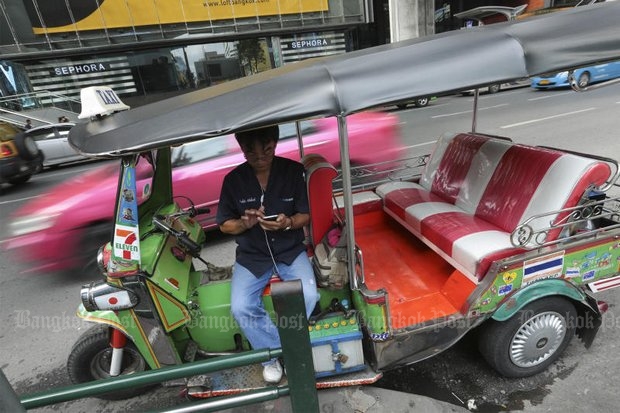The National Broadcasting and Telecommunications Commission (NBTC) is proposing mobile tariff rates among Asean operators be harmonised to enhance business competitiveness.
The GSM Association (GSMA), meanwhile, has suggested Asean align spectrum bands with globally harmonised bands to support the growing demand for mobile broadband service.
By early next year, ICT ministries in Asean are expected to execute harmonised mobile tariff rates to bring down prices, NBTC secretary-general Takorn Tantasith said yesterday at the Asean Symposium attended by heads of regional regulators.
Apart from Asean members, he said, Japan, South Korea and China had also expressed interest in harmonising mobile rates with Thailand.
An internal survey of all 10 Asean members showed Thailand's mobile prepaid tariff rates were the third lowest after Brunei and Singapore. Thailand's mobile data service rates are the fourth lowest after Brunei, Singapore and Indonesia.
"Mobile phone charges are higher in developing countries than in developed countries," Mr Takorn said.
He said the NBTC was on the verge of modernising Thailand's telecommunications infrastructure in a bid to accommodate the development of a digital economy, which is expected to materialise over the next two years.
The regulator is also close to reclaiming the unused portions of the 2300-megahertz spectrum from TOT Plc and the 2600-MHz spectrum from MCOT Plc. They will be reallocated to mobile operators through auctions next year to provide mobile broadband service.
In addition, the NBTC is pushing the establishment of a holding company to manage Thailand's telecom network infrastructure.
The regulator has assigned TOT and CAT Telecom to group all overhead power, telecommunications and broadcast cables into a single platform below ground.
The underground piping plan has already started n Bangkok and will expand to major provinces.
Construction of underground piping facilities is aimed at preventing a possible collapse of concrete power poles carrying an excessive weight of utility wires. The concrete poles can no longer support more cables, Mr Takorn said.
Joe Guan, the GSMA's spectrum policy manager for Asia-Pacific, said having regional spectrum harmonisation for mobile broadband would make network equipment more affordable, provide radio compatibility between different spectrum users and avoid cross-border radio interference.
The proliferation of smartphones and increasing adoption of 4G service are even driving mobile data consumption, he said.
By 2020, there will be 3 billion smartphone connections in Asia-Pacific, up from 1.7 billion last year, while mobile data traffic will surge by almost 10 times.
The mobile industry is expected to contribute 5.9% of GDP in Asia-Pacific and be worth US$1.8 trillion by 2020 compared with $1.1 trillion in 2014 or 4.7% of GDP.
Southeast Asia's mobile industry generated tax revenue of $130 billion last year, and the figure is expected to increase to $150 billion by 2020.



